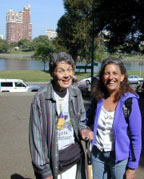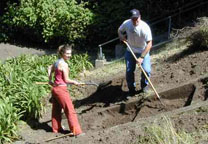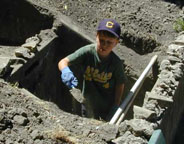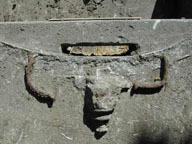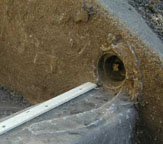In the summer of 2003, a Neighborhood Crime Prevention Council (NCPC) for the neighborhood was organized, and participants were interested in resuscitating the Cleveland Cascade. We had heard rumors of previous efforts, but did not know why they failed.
None of the photographs we had seen to date were clear enough and sufficiently close-up to get a good idea of what the original water feature looked like, beyond the verbal descriptions we had read. We didn’t know how wide it was, or what was its scale.
We scheduled our first work party for the Cascade for May Day, 2004.
In April 2004, the leader of the NCPC’s Green Team, Barbara Newcombe, went to the Environmental Design Library at the University of California at Berkeley to research the Cascade. She discovered a 1931 article by Howard Gilkey which had the clearest and most-detailed photograph we had ever seen of the functioning waterworks. Finally we knew what we were looking for.
PGA Design, a local landscape-architecture firm, heard about our project and generously donated their services, selecting appropriate plants and plotting out their best placement. On the May work day volunteers planted and mulched on the lowest level.
Some of us climbed to the top, armed with picks and shovels, to see what we could find. With a long, stiff wire we probed to ascertain the precise location of the buried ruin, and began digging.
After three weekends almost all of the ruins had been excavated. The saucers were no longer attached or intact, but we did find fragments. We did not find any fragments of the shell-shaped light shields, but did locate the mortar joints where they had been attached.
Next: Restoration


